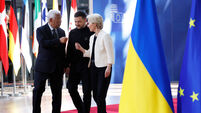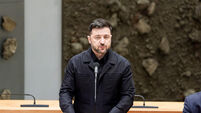Japan and US to station Patriot interceptor missiles on American bases
The announcement came just days after the two nations expanded their push to construct a joint anti-missile shield. The step came as diplomatic efforts intensified to halt suspected moves by North Korea to test a long-range ballistic missile.
South Korea also reportedly urged the United States to hold bilateral talks with Pyongyang to defuse the stand-off. Seoul’s foreign minister headed to Beijing for talks with North Korea’s top ally. Japan’s defence chief said it was unclear if Pyongyang was fuelling the missile in preparation for a launch — despite intelligence reports suggesting the contrary.
The announcement that Washington and Tokyo will install Patriot Advanced Capability-3 missiles on US bases follows an accord earlier this month as part of a project that’s been in the works for years. Last year, the US allowed Japan to manufacture Patriot missile systems for Japanese military bases.
The move to deploy the Patriots emerged after Tokyo and Washington on Friday signed a separate agreement to expand their co-operation on a joint ballistic missile defence shield, committing themselves to joint production of interceptor missiles. In a further step to strengthen defences, the US has also moved up its planned test of a missile-detecting radar system in northern Japan, Kyodo News agency reported today, citing an unidentified US official in Washington.
The US also has Patriots stationed in South Korea.
The US military in 2004 completed deployment of PAC-3 missile batteries at Gwangju Air Base, about 150 miles south of Seoul.
A Japanese Defence Agency spokeswoman who confirmed the Japan deployment plans said the weapons would be installed as early as possible, but did not give a date or any locations.
The PAC-3 are designed to intercept ballistic missiles, cruise missiles or enemy aircraft, but a Japanese news report said the PAC-3 may be unable to hit North Korea’s latest long-range missile. The Yomiuri newspaper reported that the US military would deploy three or four of the surface-to-air missile batteries on Okinawa by the end of the year and send an additional 500 to 600 US troops there. Up to 16 missiles can fit in a single PAC-3 battery, according to the manufacturer, Lockheed Martin Corp.
The plan was proposed by US officials during a June 17 meeting in Hawaii, the Yomiuri reported.
Intelligence reports have said North Korea may be fuelling a Taepodong-2, one of its most advanced missiles believed capable of reaching parts of the US.














